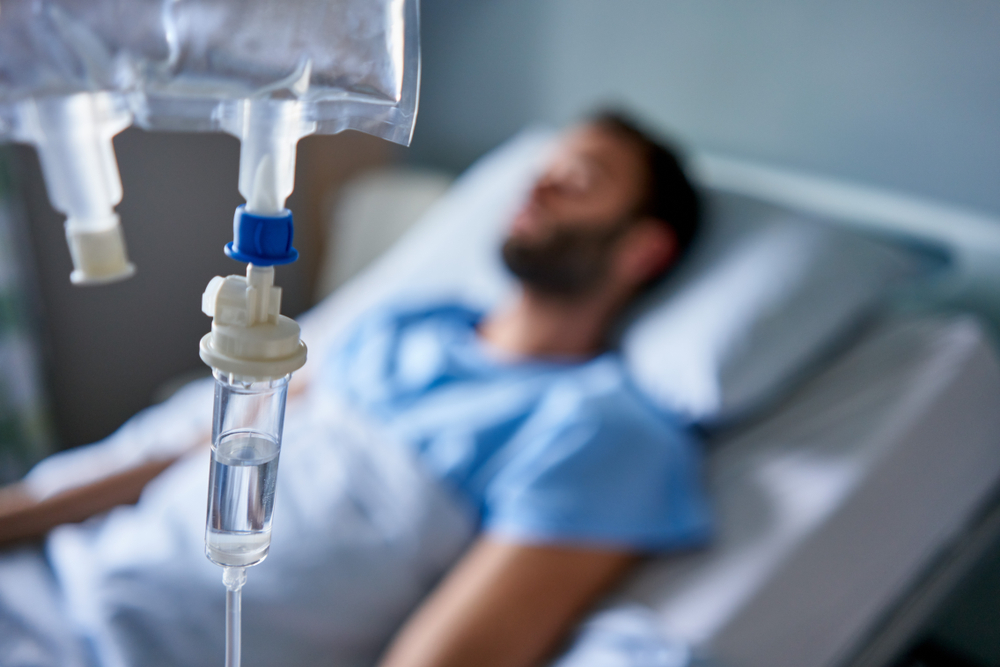
How do you treat a diabetic emergency? What are the signs of a diabetic emergency? Individuals who are diagnosed with diabetes have to be well aware of the warning signs and how to manage their symptoms properly. That is why it’s crucial for them and their loved ones to understand how to spot a diabetic emergency as well as the steps to take to treat that emergency.
We will be discussing the three common types of diabetic emergencies, the symptoms, and the suggested treatments. Hint: You should go to the emergency room ASAP!
Types of diabetic emergencies, their symptoms, and how to treat them
Hypoglycemia (low blood sugar)
If your blood sugar drops below 70 milligrams per deciliter (mg/dl), you can be at risk for seizures, which can be life-threatening. If you or someone you love has diabetes, knowing the warning signs of a seizure could help you save that person’s life in a potential emergency situation.
Symptoms of hypoglycemia include:
- Confusion or dizziness
- Blurred vision
- Shaking
- Seizures
- Passing out
- Alcohol poisoning: If you’re experiencing signs of alcohol poisoning, it’s likely that your blood sugar levels have dropped to a very low level.
If you suspect that you or a loved one is dealing with the symptoms of hypoglycemia, your goal is to raise the blood sugar. Knowing how much sugar to give in a diabetic emergency can be life-saving.
The American Diabetes Association (ADA) recommends the following amounts: Eat 15 grams of fast-acting carbs (3-4 glucose tablets or gels, 4 ounces of fruit juice or regular soda, or a tablespoon of honey or sugar) and wait 15 minutes. Test the blood sugar to see if levels are normal –– if not, repeat this step. If the blood sugar levels are not rising, head to an emergency room.
Hyperglycemia (high blood sugar)
Hyperglycemia is blood glucose greater than 125 mg/dL (milligrams per deciliter) while fasting or not eating for at least eight hours. An extreme case of this condition is called hyperosmolar hyperglycemic syndrome (HHS). Being in a hyperosmolar hyperglycemic state happens when blood sugar levels are very high (over 600 mg/dL) for a long period of time.
Symptoms of hyperglycemia include:
- Fruit-scented breath
- Frequent urination
- Excessive thirst
- Confusion
- Nausea and vomiting
- Shortness of breath
If you notice any of the warning signs listed above, your goal is to lower your blood sugar. The quickest way to reduce high blood sugar is to take fast-acting insulin or exercise. However, we recommend contacting your doctor or heading to the nearest emergency room for treatment, especially if you suspect you may be in a hyperosmolar hyperglycemic state.
Diabetic ketoacidosis (DKA)
DKA is a serious complication of diabetes. This condition occurs when your body doesn’t have enough insulin to allow blood sugar into your cells for use as energy. This results in your body producing acids called ketones that can be life-threatening if produced in high amounts.
Symptoms of DKA include:
- Fruit-scented breath
- Frequent urination
- Excessive thirst
- Dry skin and mouth
- Fatigue and fainting: DKA is one of the main causes of dizziness and nausea in diabetics
- Muscle stiffness
- Nausea and vomiting
- Stomach/abdominal pain
For an at-home treatment option, purchase an over-the-counter blood and urine testing kit. This kit can be used to detect high blood sugar levels (greater than 250 mg/dL) and high ketone levels in your urine. Use this test every 4 to 6 hours.
If after using that home test kit you notice your ketone levels are moderate or high, head to the nearest emergency room immediately! Untreated DKA can lead to severe dehydration, coma, and swelling of the brain, so it’s best to seek medical help as soon as possible.
How the ER handles diabetic emergency treatment:
When should a diabetic go to the emergency room? If you have signs and symptoms of diabetic ketoacidosis or hyperosmolar hyperglycemic state, head to an emergency room immediately.
Here are some common types of treatments that you will receive at the emergency room.
- Fluid replacement: Usually administered through an IV, the fluids replace those you’ve lost, as well as helping to dilute the excess sugar in your blood.
- Electrolyte replacement: If your body is failing to produce enough insulin, this can lower the level of several electrolytes in your blood, which is responsible for fluid regulation in your body. You’ll receive electrolytes through an IV to help keep your heart, muscles, and nerve cells functioning normally.
- Insulin treatments: Insulin reverses the symptoms of DKA. The insulin will likely be administered through an IV.
Get quality diabetic emergency treatment at Complete Care’s 24/7 ER
How do you treat a diabetic emergency? Though home remedies can be successful for some types of diabetic emergencies, we recommend seeing a medical professional at an emergency room if you are experiencing symptoms of a diabetic emergency. This way, you can get the quality help you deserve and prevent any further emergencies from occurring.
If you have any questions about diabetes prevention or management such as “Can you get diabetes from eating too much sugar?” or “Does a portion control diet help with managing diabetes?” we are here to answer any questions you may have.
Complete Care offers quick emergency care with ER locations in both Texas and Colorado. Our offices are open 24/7 and do not require an appointment. So come right in and we will take complete care of you.
More Helpful Articles by Complete Care:
- Broken and Severe Ankle Sprain Treatment
- Does High Cholesterol Cause Chest Pain?
- 7 of The Most Common Workplace Injuries
- How Long Does Sunburn Last?
- How SPF Works and Which to Choose
